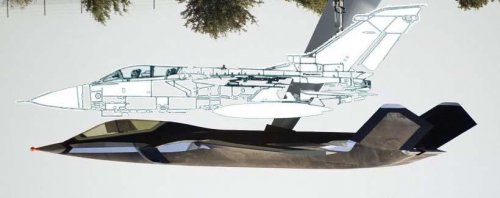PARIS --- Twelve years into the program, the F-35 fighter’s cost overruns are so spectacular that, even before South Korea has officially confirmed that it will buy the aircraft, Lockheed Martin’s P.R. machine is already in gear, explaining just how much the Korean order will reduce costs for the Pentagon, the main F-35 buyer.
And such is the urgency to provide some good news about the program, which is facing new order cuts because of sequestration, that the claims about the F-35's benefits are becoming increasingly nonsensical.
A Nov. 26 Reuters news story claims, for example, that “The South Korean order could create 10,000 jobs at Lockheed and its suppliers as they build the components to make the 40 jets.” This is not even remotely plausible.
If it were, and thus if each F-35 ordered did indeed create 250 jobs, the F-35 program’s planned 2,995 aircraft would generate fully 748,000 jobs at “Lockheed and its suppliers.” This figure should have given even the most enthusiastic program backer reason for pause, given that the entire US aerospace industry employs only 624,800 people, according to 2011 figures published by the Aerospace Industries Association. But apparently not.
This is not the strangest claim made in support of the F-35 in this story.
Quoting “sources familiar with the program,” the author further writes that South Korea's buy of 40 F-35 fighters “will save the U.S. military about $2 billion by driving down the per-plane price of the new plane.”
This is a particularly interesting figure, and not only because the only two sources identified in the story are self-avowed Lockheed Martin consultant Loren Thompson and Jim McAleese, “a Virginia-based defense consultant” whose website states that “a large portion of McAleese’s clients hold—or are seeking—Federal government contracts with DoD…”
If South Korea’s order for 40 F-35s does indeed save the Pentagon about $2 billion, then each aircraft lowers Pentagon costs by $50 million. By the same logic, each lost order should increase the cost to the Pentagon by the same $50 million – not far off, by the way, from the $65 million unit cost that Lockheed continues to claim is the average unit cost of the aircraft.
Following the same logic, we can now estimate how much the reduced orders by other customers have increased the price the Pentagon will pay for its F-35s.
A short look at recent changes in the foreign order book is thus instructive.
- United Kingdom:
Initially slated to buy 150 aircraft, the UK government has now amended its plans and will only buy 48 F-35Bs for its new aircraft carriers, any possible buy for the Royal Air Force being pushed off well into the future. At $50m each, the loss of 102 UK orders adds $5.1 billion to what the Pentagon will pay for its F-35s.
- Italy:
Italy initially planned to buy 130 F-35s, but this was reduced to 90 because of budget cuts. This is a loss of 40 orders, which will add $2 billion to the Pentagon’s F-35 bill.
- Netherlands:
The Dutch air force initially planned to buy 85 F-35s, but the current government has decided to reduce the number to 37, a loss of 48 orders and a price increase of $2.4 billion for the Pentagon.
- Canada:
Initially due to buy 65 F-35s, Canada has now reopened its new fighter replacement program. While the F-35 might still be selected, but in smaller numbers as there is a price cap on the program. For the time being Canada is no officially no longer a buyer, and the loss of its 65 orders translates into a cost increase of $3.25 billion for the Pentagon.
- Norway:
While it also initially planned to buy 85 F-35s, Norway has now decided it will buy only 52, a reduction of 33 and thus a cost increase of $1.65 billion for the Pentagon’s own F-35s.
So, in total, the program has so far lost 228 orders from the above international partners.
At $50m a pop, these cancellations have so far added $14.4 billion to the cost of the Pentagon’s own F-35s – something that Lockheed’s P.R. machine has failed to point out, even though it was quick to stress the $2 billion savings entailed by that future Korean order.
And here’s another thought. In 2001, when the program was launched, total F-35 orders were estimated by Lockheed at 5,179 aircraft. This has now been reduced to about 3,000 – none-one knows the final figure – so the loss of these 2,179 aircraft will have increased acquisition costs by $108.95 billion.
A final remark on the Reuters story. It again quotes Loren Thompson as saying that “Singapore would likely follow [Korea] with its own order, followed by Malaysia and possibly New Zealand.” Again, this is patent nonsense.
Even if Malaysia was considered secure enough to be trusted with the F-35’s much-vaunted “stealth” technologies – which is doubtful, if these really are as vital and as game-changing as claimed – it is totally implausible that New Zealand, which abandoned fast jets a decade ago because of their expense, would reverse this decision simply to buy F-35s, the most expensive of them all and, given the country’s geographical environment, the most useless,
All this shows just how desperate the pro-F-35 lobby is to find and publicize any good news relating to the program -- even if it has to make them up.
.


![K-77M_Seeker_zps76b9c957[1].jpg](/data/attachments/89/89603-0e374a9b6fb1f81d1acb2ca3669e31b9.jpg)

